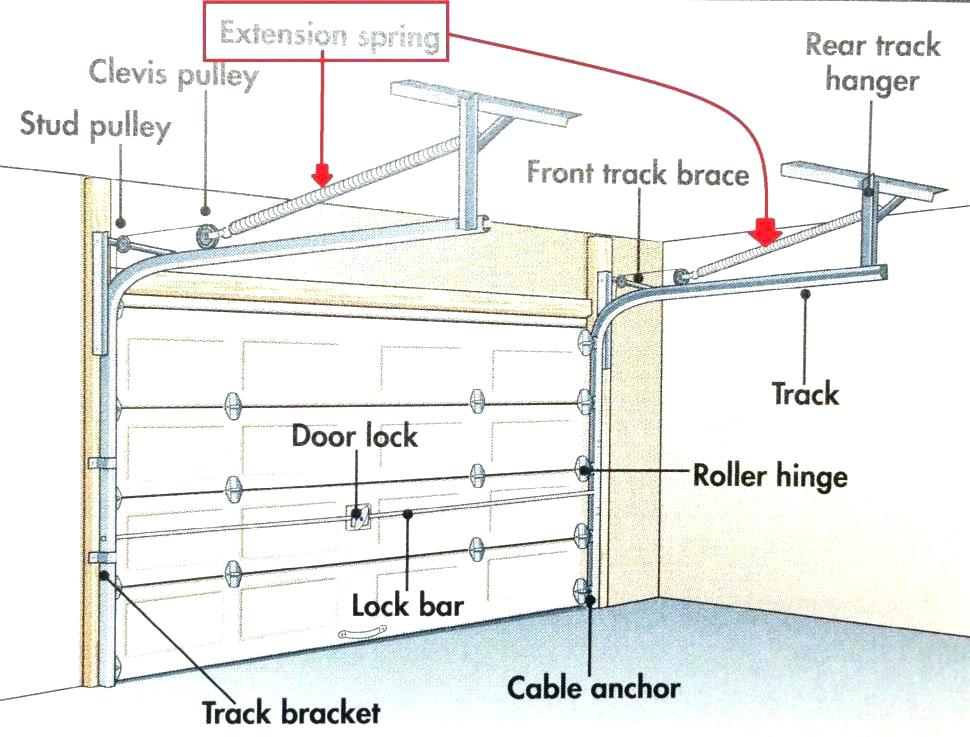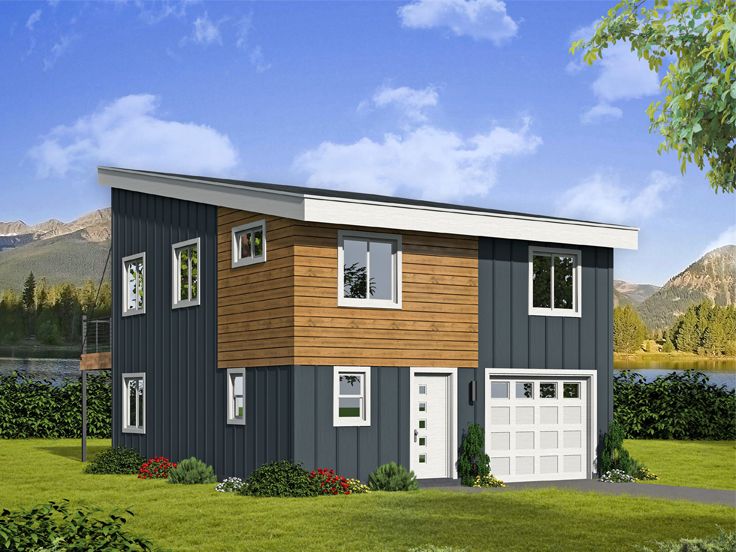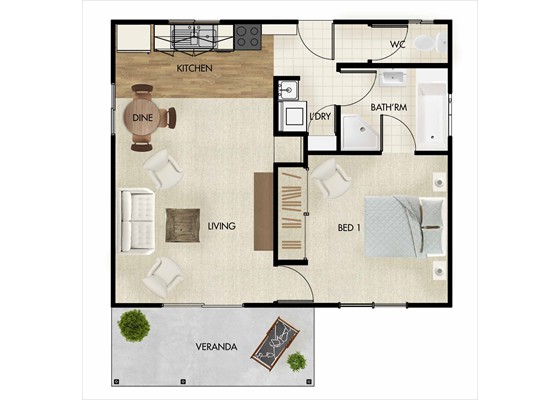
A belt drive garage door opening system is the best for homeowners who are looking for a sleek and quiet design. They can be installed on doors up to 7 feet tall and have multi-functional wall controls, safety sensors, and a variety of programming options.
The belt runs on a track connected to the cart, which opens and closes the door. This system is extremely quiet and doesn't usually need lubrication.
This opener can be used on single and double residential garage doors. But, they can also attach to heavier commercial doors like steel rolling doors or wood-insulated doors. Raynor dealers can help you choose the right motor for your application.
Chain driven garage door openers generally have a higher load-bearing ability than belt drives. They are commonly used on heavier and larger doors. They can also be more robust and may last for longer periods of time in certain applications.

They can also be a bit more affordable than belts depending on the frequency of usage and other factors. They will still cost more than a traditional belt, but they are a great option for those who want a high-quality garage door opener at a reasonable price.
A chain is made from metal or polyurethane. It is attached to a drive trolley with a threaded link. This type of opener is a lot stronger than the belt, but it can be noisy when opened manually. To reduce friction, noise and vibration, the chain can also be lubricated.
If the chain is damaged or worn, it can be replaced. But they can't be replaced as easily as belts and might cost more.
Another downside to chains is that they can make noise when the door is being opened and closed, especially if the opener is near the house or on a detached garage. You might consider a battery backup opener if this is the case.
If the opener makes a lot or too much noise, it is a sign that something is wrong. This could be an indication of a more serious problem like a broken track or warped roll.

Depending on your garage door brand, the source of the beeping may vary. It could be the remote or keypad, sensors or even a fuse.
Some models include an integrated battery backup. If your home has an electrical outlet, you can usually add one to it. This will ensure the opener's operation even if there is no power in your area. It will also allow you to use the opener when power comes back on.
Modern models feature DC motors with soft start and stop capabilities. This can help to reduce noise. They are extremely reliable and come with a lifetime warranty. You will also save money in long-term maintenance costs because they do not require lubrication like chains or screws.
FAQ
What are the top expenses associated with remodeling a Kitchen?
When planning a kitchen renovation, a few major costs are involved. These include demolition, design fees, permits, materials, contractors, etc. However, these costs are quite small when taken individually. However, when you combine them all, they quickly add-up to become very large.
Demolition is the most costly cost. This includes removing the old cabinets, appliances, countertops, flooring, etc. The insulation and drywall must be removed. You will then need to replace them with new items.
Next, hire an architect who will draw plans for the space. You will need permits to ensure your project meets the building codes. The next step is to find someone who will actually do the construction.
The contractor must be paid once the job has been completed. You could spend anywhere from $20,000 to $50,000, depending on how large the job is. You should get estimates from multiple contractors before you hire one.
You can sometimes avoid these costs if you plan. You may be able get better material deals or to skip some of the work. Knowing what is required will allow you to save both time and money.
Many people attempt to install cabinets themselves. Because they don't have professional installation fees, this is a way to save money. However, this can lead to them spending more to learn how to place cabinets. A job can typically be done in half the time than it would take for you by professionals.
Unfinished materials can also be a way to save money. Pre-finished materials such as cabinets should be inspected before you purchase them. You can begin using unfinished materials right away if they are purchased. And you can always decide to change your mind later if something does not go according to plan.
Sometimes it is not worth the hassle. It is important to plan your home improvement projects in order to save money.
What's the difference between a remodel or a renovation?
A remodel is a major change to a room or part of a room. A renovation is a minor change to a room or a part of a room. Remodeling a bathroom is a major job, but adding a faucet to the sink is a minor one.
Remodeling entails the replacement of an entire room, or a portion thereof. Renovating a room is simply changing one aspect of it. A kitchen remodel could include replacing countertops, sinks and appliances as well as changing lighting and paint colors. A kitchen remodel could also include painting the walls or installing new lighting fixtures.
What is the difference between building a new home and gutting a current one?
A home's contents are removed, such as walls, floors, ceilings and plumbing. It's usually done when you're moving into a new place and want to make some changes before you move in. It is often very costly to gut a home because of all the work involved. Depending on the job, the average cost of gutting a home is between $10,000 and $20,000
A builder builds a house by building it frame by frame. Then, he adds walls and flooring, roofing, windows and doors. This usually happens after you have purchased lots of lands. It is usually cheaper than gutting a house and will cost around $15,000 to $30,000.
It comes down to your needs and what you are looking to do with the space. You will probably have to spend more to gut a house. If you're building your home, however, you don't have to tear everything down and start over. Instead of waiting for someone else, you can build it how you want.
How do I determine if my house requires a renovation or remodel?
First, you should look at whether your home has been updated recently. A renovation might be in order if the home has not been updated for some time. If your home appears brand-new, you might consider a renovation.
A second thing to check is the condition of your house. A renovation may be necessary if your home has holes in its drywall, cracked wallpaper, or missing tiles. If your home is in good condition, it might be worth considering a remodel.
The general condition of your home is another important factor. Are the structural integrity and aesthetics of your home? Do the rooms look good? Are the floors clean? These questions are critical when deciding what type of renovation you should do.
Do you think it is cheaper to remodel a kitchen or a bathroom?
Remodeling a kitchen or bathroom is a costly undertaking. However, when you consider how much money you pay each month for energy bills, upgrading your home might make more sense.
An inexpensive upgrade can save you thousands of dollars every year. Simple improvements such as insulation of walls and ceilings can lower heating and cooling costs up to 30 percent. Even a simple addition can increase comfort and reduce resale costs.
Remember to choose durable and easy-to maintain products when you are planning your renovations. Materials such as porcelain tile, stainless steel appliances, and solid wood flooring last longer and require fewer repairs than vinyl or laminate countertops.
It is possible to reduce utility costs by replacing older fixtures with more modern models. By installing low-flow faucets, you can lower your water usage up to half a percent. By replacing inefficient lighting with compact fluorescent lamps, you can reduce electricity consumption up to 75%.
How much does it cost for a shower to be tiled?
It's worth spending a lot if you plan to do it yourself. It's an investment to remodel a full bathroom. It is worth the investment in high-quality fixtures and materials, especially when you consider the long-term benefits of having a beautiful space that will last for many years.
You can make a big impact on how your room looks. This quick guide will help with your selection of the best tiles, no matter if you're looking for small or big projects.
First, decide which type of flooring you'd like to install. The most common options are ceramics, stone, porcelain, and natural timber. Then, select a style--like classic subway tile or geometric patterns. Next, choose a color palette.
It is important to match the tile to the rest in a large bathroom remodel. For example, you may opt for white subway tile in the kitchen and bath area while choosing darker colors in other rooms.
Next, decide the scope of the project. Do you think it is time to remodel a small powder-room? Do you want to add a walk-in wardrobe to your master bathroom?
Once you've determined the project's scope, visit local stores and check out samples. By doing this, you will get an idea of the product's installation methods.
Finally, shop online for great deals on ceramic and porcelain tiles. Many retailers offer free shipping and discounts on bulk purchases.
Statistics
- $320,976Additional home value: $152,996Return on investment: 48%Mid-range average cost: $156,741Additional home value: $85,672Return on investment: (rocketmortgage.com)
- According to a survey of renovations in the top 50 U.S. metro cities by Houzz, people spend $15,000 on average per renovation project. (rocketmortgage.com)
- 5%Roof2 – 4%Standard Bedroom1 – 3% (rocketmortgage.com)
- 55%Universal average cost: $38,813Additional home value: $22,475Return on investment: 58%Mid-range average cost: $24,424Additional home value: $14,671Return on investment: (rocketmortgage.com)
- Following the effects of COVID-19, homeowners spent 48% less on their renovation costs than before the pandemic 1 2 (rocketmortgage.com)
External Links
How To
Does home renovation need a building permit?
You must do your research before you start renovating your home. Any construction that involves changes to the exterior walls of your home requires a building permit. This includes adding an addition, remodeling your kitchen, replacing windows, etc.
If you decide to renovate your home, but without a permit from the building department, there may be severe consequences. You could be subject to fines and even legal action if you cause injury during renovation.
Most states require that anyone who works on a residential structure obtain a building permit before they can start the work. Many counties and cities also require homeowners that they apply for a permit before starting any construction project.
Most building permits are issued by local government agencies such as the county courthouse, city hall, and town hall. However, they can also be obtained online and by telephone.
It is best to have a building permit. This permits you to make sure that your project complies both with local safety standards and fire codes.
A building inspector, for example, will check that the structure meets all current building code requirements. This includes proper ventilation, fire suppression, electrical wiring, plumbing and heating.
Inspectors will also make sure that the deck's planks are strong enough for the weight of whatever is put on them. Inspectors will also look for signs of water damage, cracks, and other problems that could compromise the structure's overall stability.
Contractors can start the renovations only after the building permit approval has been received. Contractors could face arrest or fines if they fail to obtain the necessary permits.